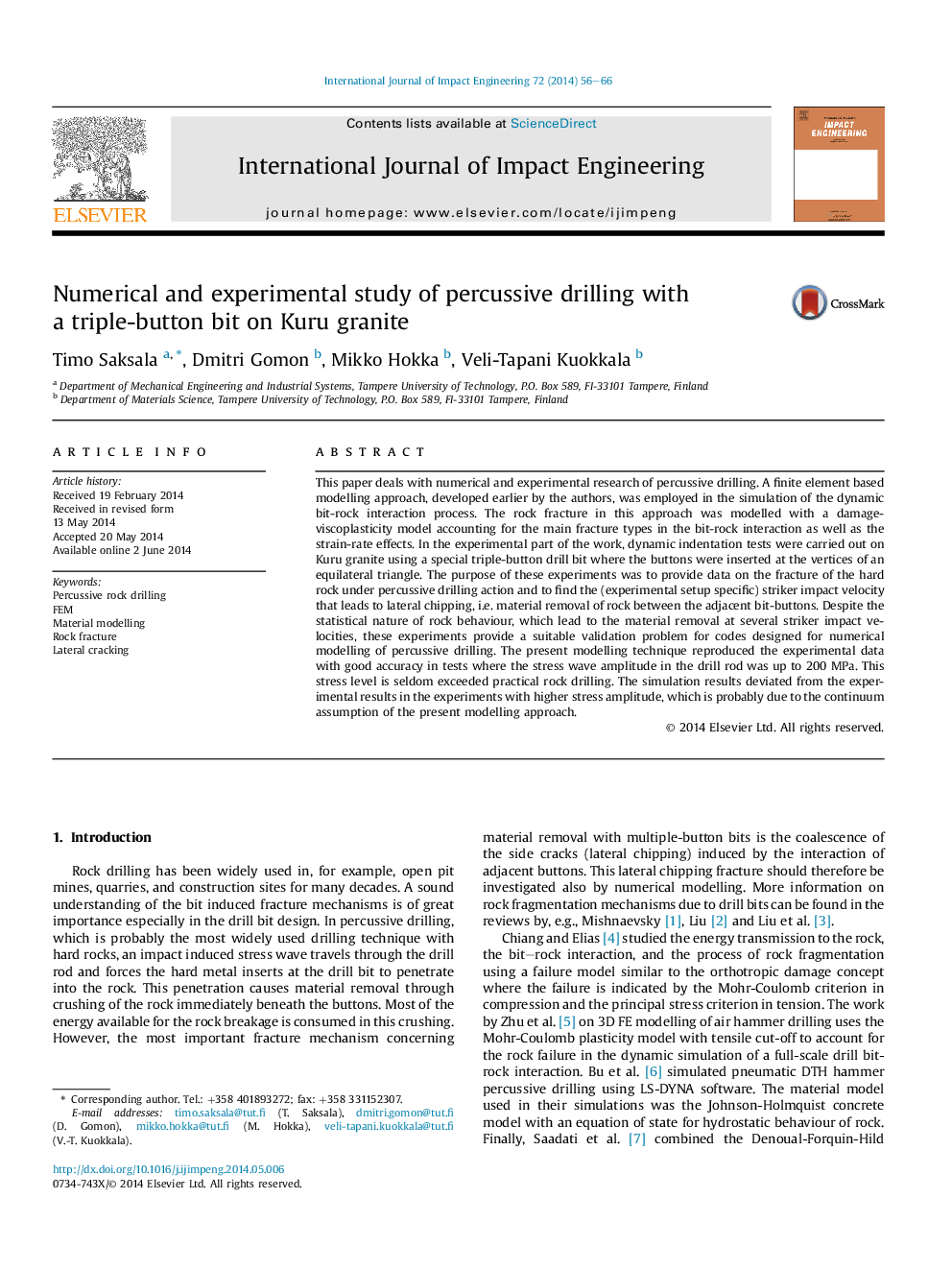| Article ID | Journal | Published Year | Pages | File Type |
|---|---|---|---|---|
| 779327 | International Journal of Impact Engineering | 2014 | 11 Pages |
•A numerical model based on visco-plasticity and isotropic damage for simulation of percussive drilling is presented.•Percussive drilling experiments on Kuru granite were carried out using a special triple-button drill bit.•The experiments provide a suitable validation problem for numerical codes designed for modelling percussive drilling.•The present numerical model accurately predicts the experimental craters and the bit force-penetration curves.
This paper deals with numerical and experimental research of percussive drilling. A finite element based modelling approach, developed earlier by the authors, was employed in the simulation of the dynamic bit-rock interaction process. The rock fracture in this approach was modelled with a damage-viscoplasticity model accounting for the main fracture types in the bit-rock interaction as well as the strain-rate effects. In the experimental part of the work, dynamic indentation tests were carried out on Kuru granite using a special triple-button drill bit where the buttons were inserted at the vertices of an equilateral triangle. The purpose of these experiments was to provide data on the fracture of the hard rock under percussive drilling action and to find the (experimental setup specific) striker impact velocity that leads to lateral chipping, i.e. material removal of rock between the adjacent bit-buttons. Despite the statistical nature of rock behaviour, which lead to the material removal at several striker impact velocities, these experiments provide a suitable validation problem for codes designed for numerical modelling of percussive drilling. The present modelling technique reproduced the experimental data with good accuracy in tests where the stress wave amplitude in the drill rod was up to 200 MPa. This stress level is seldom exceeded practical rock drilling. The simulation results deviated from the experimental results in the experiments with higher stress amplitude, which is probably due to the continuum assumption of the present modelling approach.
